 W
WThe Airfields of Britain Conservation Trust (ABCT), founded 2006, is a non-profit organisation that works to preserve and protect airfields in Great Britain, as well as educating people about their history. The Trust is a registered charity.
 W
WAllerthorpe Common is a Site of Special Scientific Interest (SSSI) and nature reserve in the East Riding of Yorkshire, England. It is located close to the town of Pocklington.
 W
WThe Ancient Monuments and Archaeological Areas Act 1979 or AMAAA was a law passed by the UK government, the latest in a series of Ancient Monument Acts legislating to protect the archaeological heritage of England & Wales and Scotland. Northern Ireland has its own legislation.
 W
WThe Ancient Monuments Protection Act 1882 was an Act of the Parliament of the United Kingdom of Great Britain and Ireland. It was introduced by John Lubbock, 1st Baron Avebury, recognising the need for a governmental administration on the protection of ancient monuments, and was finally passed after a number of failed attempts on heritage protection acts. The gradual change towards a state-based authority responsible for the safeguarding of the Kingdom's national heritage manifested itself through the appointment of the first Inspector of Ancient Monuments in 1882, General Pitt-Rivers.
 W
WThe Ancient Monuments Society (AMS) is a learned society and registered charity in England and Wales, founded in 1924 "for the study and conservation of ancient monuments, historic buildings and fine old craftsmanship".
 W
WThe Architectural Heritage Fund (AHF) is a registered charity founded in 1976 to promote the conservation of historic buildings in the United Kingdom. It provides information, advice and finance to Building Preservation Trusts and other charities in the U.K.
 W
WAn area of special scientific interest or ASSI is a conservation designation denoting a protected area in Northern Ireland. ASSIs are the equivalent of sites of special scientific interest (SSSIs) in the rest of the United Kingdom.
 W
WBarn Hill Meadows is a Site of Special Scientific Interest (SSSI) in the East Riding of Yorkshire, England. It is located close to the town of Howden. The site, which was designated a SSSI in 1987, lies on the flood plain of the Old Derwent river. The site is important for its herb-rich, unimproved, neutral grassland. Several of the fields have been traditionally managed for hay and some retain remnant ridge and furrow features. The dominant grasses are red fescue and sweet vernal-grass. There is also an abundance of great burnet, pepper saxifrage and meadow cranes bill.
 W
WBeckhead Plantation is a Site of Special Scientific Interest (SSSI) and nature reserve in the East Riding of Yorkshire, England. It is located close to the village of Great Givendale on the Yorkshire Wolds. The site, which was designated a SSSI in 1968, is managed as a nature reserve by the Yorkshire Wildlife Trust. It lies on chalk land in Given Dale. The site is important because it demonstrates many of the characteristic features of a northern ash woodland on chalk. The tree canopy is dominated by ash with some wych elm, field maple and rowan while the understorey contains shrub species including hazel, guelder rose, elder, gooseberry and fly honeysuckle.
 W
WBedgebury National Pinetum at Bedgebury, Kent, in the United Kingdom, is a recreational and conservational arboretum and, with the National Arboretum at Westonbirt, comprises the UK National Arboreta. It was established as the National Conifer Collection in 1925 and is now recognised as the most complete collection of conifers on one site anywhere in the world. The collection has over 10,000 trees growing across 320 acres (1.3 km2), including rare, endangered and historically important specimens. Bedgebury National Pinetum conducts conservation work and is home to some 56 vulnerable or critically endangered species and houses five NCCPG National Plant Collections.
 W
WBlack Loch is a small lowland freshwater loch that is located directly to the east of Fingask Loch in the valley of the Lunan Burn and is 1 mile south of Blairgowrie, in Perth and Kinross.
 W
WThe British Trust for Ornithology (BTO) is an organisation founded in 1932 for the study of birds in the British Isles. The Duke of Cambridge has been patron since October 2020.
 W
WBuglife – The Invertebrate Conservation Trust is a British-based nature conservation charity.
 W
WIn common with cars and trucks, preservation of buses in the United Kingdom is a hobby activity enjoyed by many people, both actively or passively. The active preservation and operation of preserved buses is undertaken by private individuals, organised trusts or societies, and even commercial operators. The preserved bus fleet in the UK includes dating from the earliest pre-war models right up to models manufactured after the year 2000.
 W
WButterfly Conservation (BC) is the UK wildlife charity dedicated to saving butterflies, moths and our environment. The charity uses its research to provide advice on how to conserve and restore butterfly and moth habitats and it runs projects to protect more than 100 threatened species of Lepidoptera. Butterfly Conservation is also involved in conserving hundreds of sites and reserves for butterflies and moths across the UK.
 W
WThe Countryside Act 1968 is an Act of Parliament in the United Kingdom which enlarged the conservation and recreation functions of the existing National Parks Commission and re-named it the Countryside Commission. It provided for the establishment of country parks and gave local authorities certain powers in respect of the management of common land and of the provision of camping and picnicking sites and provided for grants to such bodies for their establishment. It provided for the employment of countryside wardens and for the making of byelaws in connection with such facilities.
 W
WCounty Wildlife Site is a conservation designation in the United Kingdom, which despite conferring no statutory protection onto a site, does affirm a site's importance and value for wildlife in its county context. The designation is classified by Natural England as being a 'Local Site' designation, though sites can also be of a regional and national importance. Whilst the exact details of the selection process differ from county to county, in general local Wildlife Trusts, local authorities and other local wildlife/environmental/conservation groups collaborate to select and designate sites. Species in County Wildlife Sites are often also in that county's or the United Kingdom's national Biodiversity Action Plan.
 W
WThe Dartmoor National Park Authority (DNPA) is a national park authority in England, legally responsible for Dartmoor in Devon. It came into existence in its present form in 1997, being preceded by a committee of Devon County Council and the Dartmoor National Park Committee from 1 April 1974.
 W
WThe Environment (Wales) Act 2016 was an Act of the National Assembly for Wales that was given royal assent on 21 March 2016. It put into place the necessary legislation to enable the planning and management of the natural resources of Wales in a more sustainable, pro-active and joined-up way than was previously possible.
 W
WFingask Loch is a small lowland freshwater loch that is about three-quarters of a mile from Rae Loch in the valley of the Lunan Burn and is 1.5 miles south-east of Blairgowrie, in Perth and Kinross. Directly to the east is the smaller White Loch, and next to it is the Black Loch.
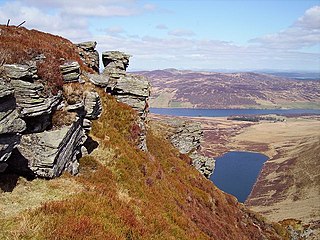 W
WLoch Freuchie, also known as Fraoch, the heatherly loch, is a large freshwater loch on a north-west to south-east orientation, within Glen Quaich in Perth and Kinross. The loch is located 2 miles (3.2 km) west of Amulree and 6.5 miles (10.5 km) southeast of Kenmore.
 W
WGloucester Civic Trust Limited is a registered charity which exists to promote the appreciate and conservation of Gloucester's heritage. Founded in 1972, the Trust is based in St. Michael's Tower, The Cross, Gloucester GL1 1PA.
 W
WThe Green Flag Award is an accreditation given to publicly accessible parks and open spaces, primarily in the United Kingdom, in order to promote standards of good management and best-practice amongst the green space sector. It is described by its issuers, Keep Britain Tidy as an "internationally recognised award that is a benchmark for well-managed green space". Over 1,900 parks and open spaces currently hold a Green Flag Award.
 W
WThe Green Light Trust is an environmental and educational charity whose mission is to bring communities and landscapes to life through 'hands-on' learning and the growing of woodlands.
 W
WHedgehog Street is a UK-based conservation initiative set up by two charitable organisations, the People's Trust for Endangered Species (PTES) and the British Hedgehog Preservation Society (BHPS). The project was established in 2011 in response to a detected decline in the hedgehog population in Britain, where it is a native species.
 W
WLoch of Butterstone is a small freshwater loch, almost circular in design, located within the nature reserve of the Cardney Estate, near Dunkeld in Perth and Kinross. It is one of a group of three lochs, which include Loch of the Lowes and Loch of Craiglush, which are located next to each other in southeast to northwest orientation. Loch of Butterstone is located at the top of the group at the northwest end, with Loch of the Lowes being at the southwest and Loch of Craiglush located north of Loch of the Lowes. The three lochs form a chain of lochs known as the Lunan Lochs.
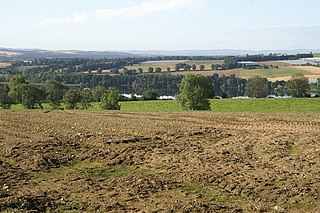 W
WLoch of Drumellie also known as Marlee Loch or Loch of Marlee is a small lowland freshwater loch that is located 2.3 miles west of Blairgowrie, in Perth and Kinross The loch is also a designated Site of Special Scientific Interest (SSSI), as well as forming part of a Special Area of Conservation.
 W
WLoch of the Lowes is a loch near Dunkeld in Perth and Kinross, Scotland. The loch and the surrounding area are designated as a wildlife reserve, run by the Scottish Wildlife Trust. The loch is also a designated Site of Special Scientific Interest (SSSI), as well as forming part of a Special Area of Conservation.
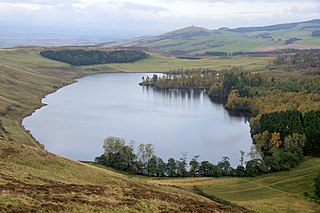 W
WLong Loch is a small lowland freshwater loch within the Sidlaw Hills in Angus. It is 1.8 miles south of the village of Newtyle, three miles east-south-east of Coupar Angus and 2 miles directly north of Lundie. It is peculiar in shape, resembling a dog's body without legs and is on a north-east to south-west orientation.
 W
WThe Marine Conservation Society (MCS) is the UK's leading marine environment, not-for-profit organisation. It works for the increased protection of the seas around the United Kingdom, via the creation of well managed marine protected areas. It works with fishermen and industry to find more sustainable ways of fishing and with retailers and consumers to buy and choose more sustainable seafood. It involves volunteers to carry out hundreds of beach cleans and surveys annually whilst also working with water companies and local communities to ensure UK bathing waters are of an excellent standard.
 W
WMonk Myre is a small shallow freshwater lochan and is located 2.5 miles southeast of Blairgowrie in Perth and Kinross.
 W
WMoses Gate Country Park, part of which is also known as Crompton Lodges, is a 750 acre site situated at Moses Gate in the Croal and Irwell Valleys 3 miles south of Bolton town centre on the A6053 road which connects Farnworth to Little Lever. It is a Local Nature Reserve.
 W
WThe National Heritage Memorial Fund (NHMF) was set up in 1980 to save the most outstanding parts of the British national heritage, in memory of those who have given their lives for the UK. It will receive £20 million Government grant in aid between 2011–15, allowing for an annual budget of between £4 million and £5 million.
 W
WThe UK's Advisory Committee on National Historic Ships was established in 2006 as a non-departmental public body reporting to the Department for Culture, Media and Sport with a specific remit to advise the Secretary of State and other public bodies on ship preservation and funding priorities.
 W
WThe Natural Environment and Rural Communities Act 2006, also referred to as the NERC Act (2006), is an Act of the Parliament of the United Kingdom.
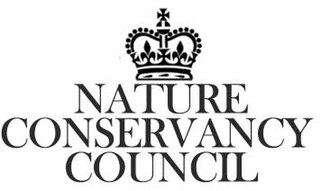 W
WThe Nature Conservancy Council (NCC) was a United Kingdom government agency responsible for designating and managing National Nature Reserves and other nature conservation areas in Great Britain between 1973 and 1991.
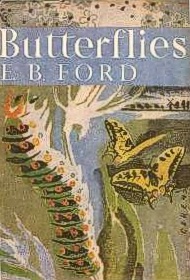 W
WThe New Naturalist Library is a series of books published by Collins in the United Kingdom, on a variety of natural history topics relevant to the British Isles. The aim of the series at the start was: "To interest the general reader in the wild life of Britain by recapturing the inquiring spirit of the old naturalists." An editors' preface to a 1952 monograph says: "An object of the New Naturalist series is the recognition of the many-sidedness of British natural history, and the encouragement of unusual and original developments of its forgotten or neglected facets."
 W
WNewt fencing is a barrier designed to control the movement of great crested newts, other amphibians or reptiles. It can also be called drift fencing or temporary amphibian fencing (TAF). It consists of a low fence of plastic sheeting, buried a short way into the ground and supported by lightweight posts usually made of wood or plastic. It is used to keep animals out of working areas, to keep them inside safe areas of their habitat, to intercept migration routes, or to control their movement to help their capture for translocation. It may be used in conjunction with pitfall traps placed at the foot of the fence. It is most commonly used in connection with building projects, to minimise harm to protected species.
 W
WPeoples Trust for Endangered Species (PTES) is a charitable organisation registered in England and Wales. It exists to promote the conservation of rare or declining species and habitats in the UK and worldwide through monitoring, public engagement, education, and through the funding of conservation projects and research. It also owns and manages two nature reserves. As of April 2015, PTES has 16 employees, five trustees and coordinates around 24,000 volunteers in the UK. PTES relies on donations from the general public and grants from trusts and foundations to continue its work - it receives no core funding from the UK Government. The organisation has registered charity number 274206.
 W
WPitlyal Loch also known as Round Loch is a small lochan in Sidlaw Hills in Angus. It is located southeast of Long Loch and is almost directly south of Newtyle and 5 miles (8 km) south-by-south-east of Coupar Angus.
 W
WPlantlife is a wild plant conservation charity. As of 2017, it owns 23 nature reserves around the United Kingdom.
 W
WRae Loch is a small lowland freshwater loch that sits directly to the east of Loch of Drumellie into which it flows and is 1.5 miles to the west of Blairgowrie, in Perth and Kinross.. The loch is also a designated Site of Special Scientific Interest (SSSI), as well as forming part of a Special Area of Conservation.
 W
WRed Rose Forest is the previous name for the charity City of Trees, the charity underwent a rebranding in 2016. City of Trees is the community forest for Greater Manchester, part of a national network of community forests across England - www.communityforest-trust.org
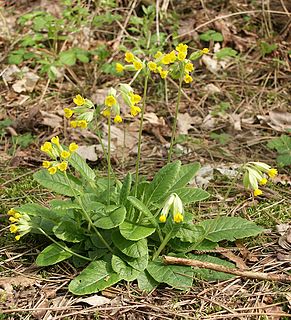 W
WRifle Butts Quarry is a Site of Special Scientific Interest (SSSI) in the East Riding of Yorkshire, England. The particular interest of this reserve is the geological feature exposed on the quarry face. The site is owned by the Yorkshire Wildlife Trust. The exposure which is identified as being of national importance in the Geological Conservation Review shows a Cretaceous unconformity, where sediments from the Jurassic and Lower Cretaceous periods were eroded away. It shows a section of Red Chalk and White Chalk overlying Lias. A shelter has been constructed to protect the quarry face from erosion. The reserve is situated on the western edge of the Yorkshire Wolds, one mile south-east of Goodmanham and two miles from Market Weighton. The site, which was designated a SSSI in 1952, has over 150 plants recorded. It still displays some characteristic chalk species, including cowslip, marjoram, field scabious and wild basil. Breeding birds include willow warbler and yellowhammer.
 W
WThe Salmon and Freshwater Fisheries Act 1975 is a law passed by the government of the United Kingdom in an attempt to protect salmon and trout from commercial poaching, to protect migration routes, to prevent willful vandalism and neglect of fisheries, ensure correct licensing and water authority approval. This helps to sustain the rural inland freshwater fisheries industry, which employs around 37,000 people in the UK.
 W
WA Site of Special Scientific Interest (SSSI) in Great Britain or an Area of Special Scientific Interest (ASSI) in the Isle of Man and Northern Ireland is a conservation designation denoting a protected area in the United Kingdom and Isle of Man. SSSI/ASSIs are the basic building block of site-based nature conservation legislation and most other legal nature/geological conservation designations in the United Kingdom are based upon them, including national nature reserves, Ramsar sites, Special Protection Areas, and Special Areas of Conservation. The acronym "SSSI" is often pronounced "triple-S I".
 W
WThe South Yorkshire Forest was a partnership initiative of the twelve Community Forests in England, started in 1991. The programme aimed to create attractive landscapes in the South Yorkshire area through improvement and regeneration of woodlands, wetlands, farmland, meadows, industrial sites and residential areas. Member organisations of the South Yorkshire Forest Partnership included the Forestry Commission, Natural England and the four local authorities of South Yorkshire: Sheffield City Council, Doncaster Metropolitan Borough Council, Barnsley Metropolitan Borough Council and Rotherham Metropolitan Borough Council.
 W
WEngland is obliged by UK law to maintain lists of species and habitats of principal importance for biodiversity conservation; the other countries within the UK: Wales, Scotland and Northern Ireland, have their own laws for this purpose. Public bodies, including local authorities now have a legal duty to have regard to conserving biodiversity in the exercise of their normal functions. In England, this obligation derives from the Natural Environment and Rural Communities (NERC) Act 2006.
 W
WStormont Loch is a small irregular lowland freshwater loch, that is partially in-filled. It located in a nature reserve owned by the Scottish Wildlife Trust, on a north-east to south-west orientation and is 2 miles southeast of Blairgowrie in Perth and Kinross.
 W
WTilgate Nature Centre is a small BIAZA-accredited zoo located within Tilgate Park in Tilgate Forest, South-East Crawley, United Kingdom.
 W
WTrees for Cities is a UK charity which aims to plant urban trees and create greener cities. Since 1993, the organisation has reported that 125,000 volunteers have planted over 1,000,000 urban trees in parks, streets, woodlands, schools, hospitals and housing estates. The charity also runs the Edible Playgrounds programme, which aims to inspire school children to grow and eat healthy food.
 W
WThe United Kingdom Association of Building Preservation Trusts acts as the representative body for Building Preservation Trusts in the U.K. Membership is open to charities whose principal objective is to preserve historic buildings. There are around 300 BPTs in the United Kingdom but not all are members of the association.
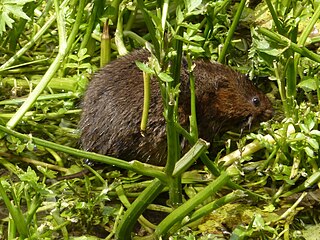 W
WThe United Kingdom Biodiversity Action Plan or (UK BAP) was the UK government's response to the Convention on Biological Diversity, opened for signature at the Rio Earth Summit in 1992. The UK was the first country to produce a national Biodiversity Action Plan. It was published in 1994 and created action plans for priority species and habitats in the UK that were most under threat so as to support their recovery.
 W
WWaterway restoration is the activity of restoring a canal or river, including special features such as warehouse buildings, locks, boat lifts, and boats. In the United Kingdom, Canada and the United States, the focus of waterway restoration is on improving navigability, while in Australia the term may also include improvements to water quality. (For water quality improvement activity in the US and UK see stream restoration.)
 W
WWhite Loch is a small lowland freshwater loch that is located directly to the east of Fingask Loch in the valley of the Lunan Burn and is 1.5 miles south of Blairgowrie, in Perth and Kinross.The loch is also a designated Site of Special Scientific Interest (SSSI), as well as forming part of a Special Area of Conservation.
 W
WThe Wildlife and Countryside Act 1981 is an Act of Parliament in the United Kingdom implemented to comply with European Council Directive 2009/147/EC on the conservation of wild birds. In short, the act gives protection to native species, controls the release of non-native species, enhances the protection of Sites of Special Scientific Interest and builds upon the rights of way rules in the National Parks and Access to the Countryside Act 1949. The Act is split into 4 parts covering 74 sections; it also includes 17 schedules.